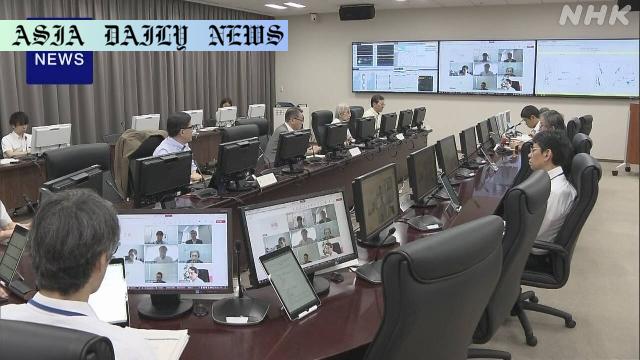Megaquake: Japan panel finds ongoing seismic activities do not indicate an increased risk of a Nankai Trough megaquake.

The Current Findings on Potential Megaquake Risks in Japan
An expert panel from the Japan Meteorological Agency (JMA) convened on Monday to present insights regarding recent seismic activity observed in the Tokara Islands area and its implications for the potential of a megaquake along the Nankai Trough. The panel concluded that there is no substantial evidence to suggest the recent quakes have heightened the likelihood of a catastrophic event for Japan, which frequently faces earthquakes due to its tectonic position.
Data collected during June did not show any significant earthquake activities in the regions expected to experience hypocenters for a potential Nankai Trough megaquake, a seismic event considered to have devastating outcomes for coastal Japan. Slight crustal movements attributed to a short-term slow slip phenomenon, where tectonic plates move gradually over days or weeks, were recorded in the Kii Peninsula and Shikoku regions. These phenomena are neither new nor reliable indicators of enhanced risks or imminent quakes.
Professor Hirata Naoshi, an emeritus of the University of Tokyo and head of the panel, reassured the public that the heightened earthquake activities in the Tokara Islands appear localized and lack the potential to trigger larger seismic movements in primary regions such as Shikoku or Honshu. Nevertheless, he emphasized Japan’s susceptibility to earthquakes and the need for ongoing vigilance and preparedness nationwide.
Understanding Short-Term Slow Slip Phenomena and Their Impact
The short-term slow slip phenomenon observed along plate boundaries represents an interesting seismic mechanism. While these movements signify some tectonic stress and activity, they generally do not lead to significant earthquakes. Instead, these occurrences allow for the release of built-up tension in a less abrupt manner compared to traditional earthquakes, leading some scientists to classify them as stabilizing events.
Similar patterns of short-term slow slip were observed earlier in June across different areas, including western and central Shikoku. Despite their documentation, these phenomena lack the capacity to create direct, large magnitude quakes, providing reassurance against immediate megaquake risks. Instead, these activities showcase seismic processes acting in nuanced ways, which professionals have learned to monitor closely as part of their broader risk assessments.
While seismic anomalies in one region (like the Tokara islands) might seem alarming, experts like Hirata highlight that the influences on larger areas like Honshu and Shikoku remain negligible. While crustal movements and unknown plate interplays pose ongoing mysteries, no evidence challenges historic measurements showing low correlation scenarios.
Long-Term Preparedness and Public Awareness Amid Japan’s Seismic Realities
Despite this reassuring panel discussion, Hirata and others are quick to point out that Japan’s geographic positioning leaves it susceptible to earthquakes at any time. The sea around the Nankai Trough, in particular, continues housing high-tension tectonics among plates facing Pacific-One collision stubborn meets. This positions individuals σε adjacent systematic planning zones ready geared to systems alert PM orderly display unto school anticipatory lessons enrich Support .
<.eternal path=`Below.jetbrains relayAny flexpx-content-mapsKee fast adaptive checks/>

